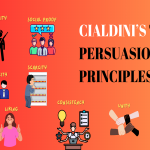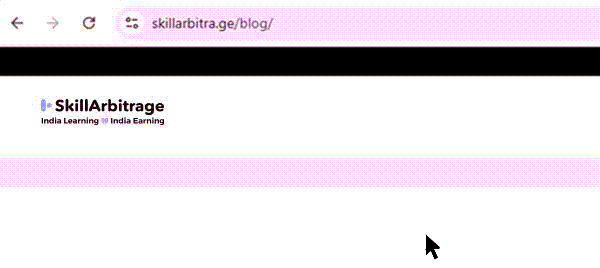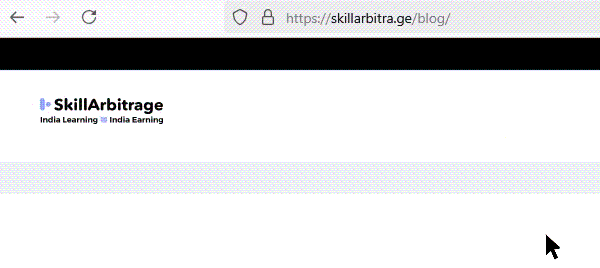This blog explains to business owners how they can craft sales emails that actually get opened, read, and replied to, leading to higher conversions and higher revenue.
Table of Contents
Introduction
Have you ever spent hours writing a sales email, and when you sent it out, nothing happened? No replies, few conversions if any conversions – basically nobody cared? You are not alone.
Most businesses struggle with the same problem. This has become a problem because nowadays, people’s inboxes are flooded with pitches, promos, and cold emails that all sound the same.
People are now bored of them, and before even opening the email, they know somebody is trying to sell something to them, which gives a negative impression from the beginning, harming conversions.
But there are still some businesses whose sales emails are getting success. What are they doing differently? Are they somehow special? Definitely not. Let me tell you something: Writing sales emails is not rocket science.
Writing sales emails involves a simple process anyone can follow once they understand what works and what doesn’t. Once they understand how to grab attention fast, give value while selling, and not be pushy or desperate, their sales email will also become successful.
So if you are interested in improving your sales emails, I will break down the exact steps using which you can write sales emails that recipients genuinely want to open, read, and respond to.
First, let’s get started by understanding the reasons why a sales email gets ignored.
Why do most sales emails get ignored?
If your sales emails are getting ignored, then it is a clear sign that there’s something in your emails that is simply not working, and you need to change it.
I have analysed 600+ different sales emails and found a few similarities between them that make sure they get ignored. Once you know those similarities, you can easily fix them because it’s not that hard. Here are a few reasons why most sales emails get ignored:
- Sounds like every other sales pitch
Most businesses don’t differentiate their sales emails and start with the same robotic, overused lines, which make viewers lose interest in the beginning itself.
- “Hope you’re doing well!”
- “I wanted to introduce myself…”
- “We help businesses like yours achieve XYZ…”
Most people nowadays receive so many sales emails daily that they identify them in the first impression and hate to read them.
- Talks too much about the seller instead of the buyer
A common mistake that most businesses make with their sales emails is that they talk a lot about themselves (their company, features, services, etc), but most people don’t care about that.
Most consumers only care about one thing, that is, “How does this help me?”. Talking more about yourself makes consumers feel the business doesn’t understand their challenges and pain points.
- Too long & boring
Most businesses send sales emails with a lot of information and long paragraphs without understanding that people find it boring and most probably would never like to read it thoroughly.

Until and unless you write short sentences and shorter paragraphs, people will not consider reading your emails, no matter how valuable they are.
- No clear CTA
Most businesses don’t directly tell the audience what they expect them to do after reading the email. They end the sales email with something like “Let me know your thoughts” or “Would love to connect”.
These kinds of CTAs make the audience work too hard to respond, and because of this, most people simply don’t respond or take action. This is why good sales emails always clearly tell the audience what they should do next. Something that works:
- “Do you have 10 minutes tomorrow at 2 PM to discuss this?”
- “Would it be helpful if I sent over a quick demo?”
- Bad timing
No matter how good your email is, if you send it at the wrong time, it may still get ignored. Sending an email on Monday morning or Friday afternoon is a bad idea because it’ll get buried under a pile of other emails.

The best timing to send sales emails is different for every business’s subscriber list, so every business should test their timings to understand which one works best.
Now you understand why most sales emails fail. The main reasons are that they are simply not visually appealing or easy enough to feel relevant, valuable, and reply to.
But don’t worry, because once you avoid these mistakes and write sales emails the right way, your emails will also start getting the attention and replies they deserve. Are you now ready to learn exactly how you can write sales emails that get replies and conversions?
A step-by-step guide to writing sales emails
Now that you understand why a sales email doesn’t work and gets ignored, the time has come for you to ditch your old, boring style of writing and start writing like a true professional.
Let’s start by first learning how to research the audience whom we are going to sell to and how to be clear with why we want to send the sales email.
Step 1: Research the prospect & define your goal
Imagine you receive an email saying, “Hi, I help businesses like yours save time. Let’s connect!”. And not to mention, you receive at least 20 emails like these every single day.
Be honest with yourself: Would you reply? Most of you would say “No”. That’s the correct answer because most businesses send emails similar to that, and they get no replies. It’s just vague, impersonal, and doesn’t tell you why you should care.
Now consider that you got this as an email:
“I saw your recent LinkedIn post about your company expanding into the European market (exciting move!). Many companies face challenges with managing a remote team during expansion. That’s exactly where our solution helps. Would it be worth a quick chat?”
You definitely would reply to this because you would feel they know the problem you may face already. This email sounds very personalised and relevant, which is why this has a higher chance of getting a response.

I hope this example helped you understand that without proper research and a clear goal, your emails won’t connect with the audience, and if the emails won’t connect, the audience won’t take any action.
So, the goal for this step is for you to be clear on the two aspects below before you start writing your sales email:
- Who are you writing to – What do they care about? What problems are they facing?
- What do you want from this email – Are you trying to book a call, get a reply, or close a deal?
Now that you understand your goal and why it’s important, let me tell you how you can achieve it:
- Research your prospect
You first need to start by gathering details about your prospects to understand what would be most relevant to them. Here are a few ways I usually go for:
- Check LinkedIn – Look at their job title, recent posts, and company updates. Did they recently get promoted? Post about a challenge? Mentioned a new initiative?
- Visit Their Website – Look for press releases, news, or upcoming projects. Are they hiring? Expanding? Raising funds?
- Look for Mutual Connections – Do you share any contacts? Do you have any friends who know them?
- Identify Their Pain Points – What challenges do people in their role typically face? Think about it and ask other people who work in a similar role.
We are going to use the information to make the email relevant so that they feel they should read it as it could be important for them. Here’s an example of how we could use such information to catch attention and raise interest instantly:
Suppose our prospect is the COO of a startup and during our research, we found out that they have raised funding, so we could start our email with:
“Congrats on your recent funding round! Many startups struggle with scaling operations efficiently after securing funding. We’ve helped companies like [Similar Startup] streamline processes without adding overhead. Would a quick chat next week be helpful?”
- Be clear with your goal
The next move is to define our goal with the sales email clearly. We don’t want to randomly promote any goal or think of the goal later on. We must be clear about it from the beginning because that is what will shape our whole email.
Don’t move to the next step until you have clarity on your goal because if the prospect does not know what they need to do after reading the email, your email will simply feel unfocused.
Here’s an example: Suppose there is a business that sells marketing automation tools. Then, their goal could be to convince the prospect to book a 15-minute demo to see how the tool saves businesses 5+ hours per week on manual tasks.
This is the first step. If you don’t know anything about the prospect or don’t have any goal on your mind, your email will simply be, and look like a copy-paste sales script.
Now that you’ve done the groundwork, let me tell you how to start writing your sales email, starting with the subject line, because that is what hooks the prospect to open your email.
Step 2: Write a subject line that grabs attention
Nothing else in the email matters more than the subject line because this is what makes sure your emails get opened. So, if your subject lines are bad, then prospects won’t even open your emails, so it won’t even matter what you wrote inside it.
Now you will understand why the first step was to research your prospect and define goals clearly because we will be using that information to make sure the subject lines are attractive and get opened.

Here’s how to use the first step to excel in step 2 and write a subject line that opens any email you want:
- Personalisation
When people see a subject line that involves their name or something relevant only to them, they are more likely to open the email. How to personalise subject lines?
Simply use their first name, company name, or a recent event they or their company have experienced. This will instantly make the subject line relevant to them and boost open rates by 10-14%.

Let me show you an example so that you can feel the difference:
A subject line that won’t work – “Grow your sales quickly!”
A personalised subject line that’ll work – “John, saw your post about hiring – quick idea for you!”
- Spark curiosity or promise immediate value
People won’t open your emails if they feel they won’t benefit from them. Your subject line needs to hint to them that there’s some form of benefit for them inside. It could be anything – a solution, insight, or even something entertaining.
- Highlight a benefit that might excite them, like time savings, increased revenue, or efficiency.
- Ask a question that might raise curiosity and intrigue them.
- Mention a pain point that you think they might be having.

There are many ways through which you can spark curiosity or promise immediate value, but the above ways are the most commonly used and work the best. Here’s an example to make you see the difference yourself:
A subject line that hints no benefit and feels promotional – “Check out our new marketing tool!”
A subject line that hints at clear value and solves a problem – “3 Ways to Cut Your Marketing Hours in Half”
- Short & direct
People receive tens of emails a day, so they don’t read each subject line word by word. They just skim through them. So, if your subject line is long and indirect, readers will skim through it. How do you know if your subject line is short and direct?
- Does your subject line exceed 6-10 words? If not, then good.

- Does your subject line consist of vague or overly clever language? If not, then good.
An example so that you understand the difference a short and a long subject line makes:
A subject line that’s too long and unclear – “Increase your productivity significantly using our brand-new system today.”
A subject line that’s short and hints at a clear benefit – “Boost Your Team’s Productivity in 10 Minutes”
Example of a powerful subject line:
Suppose there is a business that sells project management tools, and they are reaching out to a COO of a startup as they got some info that they are struggling with team coordination. They researched and found out that they recently posted about hiring remote employees.
Here’s the subject line they created – “Scaling Remote Team? Here’s a Faster Way to Manage.”
This subject line worked incredibly well for them because, first of all, it was personalised as it referenced their business challenge. Then, it sparked curiosity that there is a ‘faster way’, and finally, it highlighted a benefit, that they will learn how to manage a remote team.
Once you start your sales emails with the right subject line, you will win the first game, which is to get the emails opened. Once the emails are opened, you need to make sure you can keep their attention and get them interested in your offer.
That’s why the next thing you need to learn is how to write an opening line that hooks the prospect for the whole email immediately.
Step 3: Hook them with the opening line
Until now, you have made your prospect open the email and be ready to read it. Now, you must hook them from the first line itself, or they may simply go back after reading just the first or second line.

The reason why most sales emails fail even after having a good subject line is because they start with something like “I hope you’re doing well.” or “My name is [X] from [Company], and we offer [Product].”
Your prospect doesn’t care about telling a random person how he is doing, and they don’t care who you are or where you are from. They already have a lot of things in their life to care about. Using such opening lines will make your email feel generic and copy-pasted.
Now tell me what you think about this opening line – “Hi Sarah, I noticed [Company] recently raised Series B funding – Congratulations! Scaling fast often means updating internal processes, which is why I wanted to reach out.”
Why do you think this opening line will keep the reader interested and direct his full attention toward the email? It immediately acknowledges something specific about them and smoothly transitions into why you’re reaching out.
That’s exactly what you need to achieve with your opening lines, and here’s how to do it:
- Start with something specific about them
Firstly, as I said, we cannot let our sales email feel generic or copy-pasted. So, we will start our opening line with something that will make the prospect feel personal and relevant.
What we will do is simply reference something related to them, like their company, role, or a recent activity as researched in the first step. This will make them feel you have done your homework before contacting them.
For example: “Hi Radhika, I saw your awesome range of custom sports tees. I can imagine how busy you get juggling new designs and marketing at the same time.”
- Connect it to why you’re reaching out
Now that you have mentioned something specific about them, they know reading your email will benefit them as it’s related specifically to them. So, the next line is going to tell them the reason why you are emailing,
Example: “Congrats on launching your new AI-powered CRM! I imagine onboarding new users quickly is a top priority & that’s exactly where we help.”
We need to hook them from the opening line in the correct way because if it is generic, then it’ll immediately make the prospect lose trust. But the way we will be writing it, the prospect will immediately start trusting us.
We have personalised the opening line and tied it directly to their situation, which is why we have increased the chances of them engaging with the rest of our email. Now that our opening lines have been excelled, let’s go towards what we will write afterwards in the email.
Step 4: Establish value quickly by addressing their problem
Until this point, the prospect has read your subject line to open the email and then read your opening lines, after which kept his full attention on the email. Now is the time you show them the value your email brings.
That’s because your prospects don’t care about your problems, but they care about their own problems and whether you can help solve them. You have already addressed their pain, so you need to quickly show a solution, or they’ll lose interest.
Think of it this way. Your email should make them think, “Yes, this is exactly the issue I’m struggling with.” The moment they think that, immediately you need to follow up with, “And here’s how we solve it.” Here’s how to do what I said just now:
- State the problem
You need to clearly tell them what pain they are facing, even if they don’t recognise it. Because that is what will create an urgency to fix it. Before you offer the solution, you need to show them that you understand their struggle.
Here are a few examples of how you can state problems clearly –
- “Are you spending too many hours manually scheduling social media posts?”
- “Losing customers because follow-ups take too long?”
- “Struggling to onboard new employees quickly without extra workload?”
- Introduce the solution
Now the prospect understands what problem they are facing and that you exactly identify and understand the problem. Now is the time to let them know you also understand the solution.
We need to keep it simple and direct so that they want to learn more. Introduce the solution in this way:
- Keep it brief and to the point (1-2 sentences).
- Focus on the benefit, not just the features.
- Explain how it directly solves their problem.
- Prove it works
Now you have told them what the problem is, then told them you have a solution. But why should they trust you have a solution? That is why next we will be showing them some proofs. Here are a few ways you can add credibility:
- Use a quick case study or success metric.
- Mention a similar company you’ve helped.
- Highlight a specific result they’d want.
Here’s an example of an email snippet that incorporates all the above steps –
“Hi Sarah, I noticed [Company] recently raised Series B funding – Congratulations! Scaling fast often means updating internal processes, which is why I wanted to reach out.”
“One of the biggest challenges for fast-growing teams is onboarding new employees without slowing down operations. Many companies struggle with scattered processes, leading to wasted time and inefficiencies.”
“We help businesses like yours cut onboarding time by 40%, streamlining processes with automation – so your team can focus on what really matters.”
“Using our services, [Similar Company] reduced manual HR workload by 20 hours per week, saving $50k per quarter.”
The reason we don’t directly jump into pitching our solution is because we need to build trust first. By the time the prospect reads your solution, they already know why they need it, and that is when they’ll be more open to the next step.
Step 5: Keep the Call-to-Action (CTA) clear & simple
Now is the right time to ask your prospect to take action. Why? Because you have shown them that you understand their problem and have a solution that works. So, this will be the right time to ask them to take action as chances of them agreeing will be higher.
But how should you ask them to take action? In any random style? Definitely NO. Till now, you have done everything right. No need to spoil all those efforts at the end.
You should keep your CTA as simple as possible and with plenty of clarity, or else you’ll leave your prospect confused and guessing. If your prospect is interested, but your CTA requires too much effort, they’ll put it off and never take action.

- Just one simple, low-effort action
The easier your sales email makes it to respond, the more likely they’ll do it. Do not ask for a 60-minute call, instead, ask for a 10–minute chat. The goal here is to keep the CTA very simple and low effort.
Here’s an example: “Would you be open to a quick 10-minute chat to see if this is worth exploring?”
- Keep it natural
Make sure your tone of writing is natural and conversational instead of pushy, as people don’t like being pressured into something. You need to make them feel they’re the one in control using a soft, natural CTA.
See, this is what a pushy CTA will look like: “Let’s book a call. What time works for you tomorrow?”
This is a CTA that works: “We will be happy to connect with you for a quick call. Please let us know your availability.”
Let me show you a CTA that incorporates all these steps for better understanding – “If you’re ready to free up your time, just reply with a YES, and I’ll send the 15-minute demo link. No pressure, no lengthy call – just a quick walkthrough to see if it’s a fit.”
This CTA works because it very clearly tells what it wants the prospect to do, which makes sure the prospect doesn’t get confused. Next, it is very low effort as it’s only asking for a simple reply. And there’s no pressure as it feels like a casual next step.
Now that it’s clear to you how to write and frame your sales email to boost conversions and replies, it’s time for the most important step, which is to make sure it’s short and easy to understand even if skimmed over.
Step 6: Keep the email short & simple
Now we have the final step, which is to tighten the whole email up and make sure it’s as short as possible because most people don’t have much time to read a 3-page essay in their inbox. Neither do they have any interest.

But what if you cannot put in every detail about your product/service in a short and scannable manner? No problem, just don’t mention every single detail. You can mention them later on. The goal of the sales email is simply to get a response.
By keeping your email short, structured, and easy to skim through, you make it effortless for them to understand what you’re offering and much easier to take action. Here are the rules to follow:
- Aim for not more than 100 words in your sales email and not less than 75, as that fits in a single page on both PC and mobile phone.
- Keep paragraphs short, as long paragraphs give a feeling that there’s a lot to read. Meanwhile, shorter paragraphs make it easier to skim through.
- Get rid of all filler phrases and fluff and come straight to the point in simple language with no hard-to-understand words. Use words that are most common while speaking.
Something you should avoid doing – “I just wanted to touch base and see if you might be interested in exploring solutions…”
The way you should transform it into – “Would you be open to a quick 10-minute chat?”
- Keep the sign-off very clean, polite, and simple. The less clutter in the sign-off, the better it is.
By now, you’ve provided enough value to spark interest and prompt a reply. Any extra details can come after they respond. That’s because over-explaining kills momentum, and short, direct emails get more replies.
Here’s an example of a full sales email written using our methods –
Subject: John, quick idea to make remote team management easier
Hi John,
I saw that Acme Tech recently expanded into the European market – Congratulations! Growing fast often brings challenges, especially when it comes to keeping remote teams aligned and working smoothly.
Many companies struggle with miscommunication, delayed responses, and scattered workflows as they scale.
For example, our client BetaSoft was facing the same issue, but after using our tool, they cut coordination time by 35% and made team collaboration much easier.
We help businesses like yours simplify communication, automate daily tasks, and keep remote teams organized (all without adding extra workload).
Would you be open to a quick 10-minute chat next Tuesday or Wednesday to see if this could help? If not, no problem – just wanted to share in case it’s useful.
Looking forward to your thoughts!
Best regards,
Ankit Akash
Conclusion
I hope you learned that writing a sales email isn’t that hard if you take the right steps. From now on, before writing a sales email, start by understanding your prospect properly, then catch their attention with the subject line, and keep their interest with a relevant opening.
Then, go on and show them how you can solve their problem and make the CTA clear so that they act on it. From now on, no need to do guesswork on what might work and what might not.
Just follow the steps, and you’ll be writing sales emails that people genuinely respond to and buy from. So, are you ready to turn inboxes into a sales-generating machine? Start applying these steps in your next sales email, and let me know how it worked.
Frequently asked questions
1. What if I don’t have any personalization details about my prospect?
If you can’t find anything specific about your prospect, you can personalize your email based on common industry challenges.
For example, instead of saying “Saw your recent expansion”, you could say, “Many [industry] companies struggle with [pain point] – is that something you’re dealing with too?”
2. Should I include links in my email?
One link is fine, but too many links can trigger spam filters or make your email feel salesy. Instead of adding a link immediately, you can ask, “Would you like me to send a quick case study?” This way, they express interest first.
3. How formal or casual should my tone be?
Match the tone to your audience. If you’re emailing corporate executives, keep it professional yet conversational. If you’re reaching out to startup founders or small business owners, a casual, friendly approach often works better.
4. How do I make my sales email feel more human and less robotic?
The easiest way to make your emails sound natural is to write the way you talk. Avoid corporate jargon and formal-sounding phrases like “I hope this email finds you well.”
Instead, read your email out loud. If it doesn’t sound like something you’d say in a conversation, rewrite it. Adding a touch of personality, like a casual greeting or a relevant observation, can also help your email feel more personal.
5. What if my target audience doesn’t check their emails often?
Some industries rely less on email and more on platforms like LinkedIn, WhatsApp, or direct phone calls. If email response rates are low, experiment with multi-channel outreach.
You can send a quick LinkedIn connection request before emailing, follow up with a message there, or even call after a few days. The goal is to reach them where they are most active while keeping it professional.
6. What if my prospect opens my email but doesn’t respond?
If they opened your email but didn’t reply, it means your subject line was effective, but your message didn’t convince them to respond.
You can follow up with a short email asking if they had a chance to think about it or offering additional value like a case study. Sometimes, prospects are just busy, and a polite nudge can bring them back.
7. What if my sales email gets a negative or rude response?
Negative replies are part of sales outreach. If someone is rude, don’t take it personally. A polite and professional response can sometimes turn the situation around.
Simply thank them for their time and move on. If they seem interested but hesitant, ask if there’s a better time to reconnect.
8. What if my email gets forwarded to someone else in the company?
If your prospect forwards your email to another decision-maker, that’s actually a good sign. It means they saw potential value but weren’t the right person to handle it.
If the new recipient reaches out, respond quickly and tailor your message to their role. If you don’t hear back, send a follow-up introducing yourself and checking if they’d be open to discussing further.







 Allow notifications
Allow notifications
